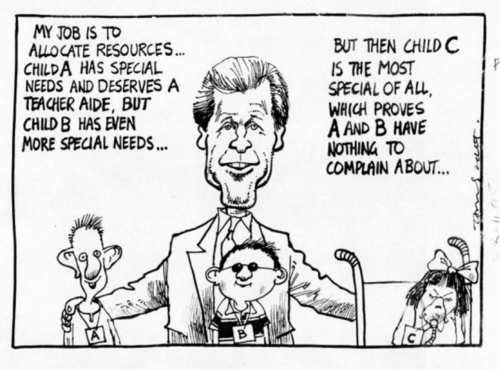Despite the 1877 Education Act, access to education for many disabled children remained out of reach for many.
In 1939, the Director General of Education, Dr Beeby, and Minister of Education, Peter Fraser, made their visionary statement about the rights to education for every child including the words “to the best of their abilities and the fullest extent of their powers”.
Eight decades on, this goal remains elusive for many disabled children.
Education for children was one of the main aims for parents establishing the IHC in 1949, but segregation of disabled children from their non-disabled peers remained.
The 1989 Education Act external was a victory of advocacy as Section 8 legislated for the right for all disabled children to attend their local state school on the same terms as other children.
The 1989 Education Act meant the state supported two systems: increasing numbers of disabled children at regular schools, as well as in numerous segregated environments.
Considerable regional variation also developed. The Government’s response was the controversial 1995 policy of Special Education 2000 external.
Its aim was to promote mainstreaming of children with 'special educational needs' in regular schools and to close units and special schools.
Unfortunately, resourcing to support mainstreaming was inadequate. Legend has it that a Treasury official decided that only 1% of children would require targeted assistance, which was implemented through an Ongoing Reviewable Resourcing Scheme (ORRS/ORS) via a complex application and faceless verification system.
There was widespread opposition to this policy from parents, including a group who took the Government to court.
There have been numerous reviews of ‘special education’ and the ORS system in the last two decades, but the principle of rationed support remains.
A Learning Support Action Plan external developed by the Ministry of Education in 2019 sets out a plan to increase access to education and support for disabled children over time.

1995 Tom Scott Cartoon featuring Minister of Education Lockwood Smith and three children. Ref: H-242-020 Turnbull Library
Advocacy for employment opportunities for disabled people led to the 1960 Disabled Persons Employment Promotion Act external and the establishment of ‘sheltered workshops’.
Operators of sheltered workshops were exempted from applying the same employment conditions and wages required elsewhere.
Contemporary thinking was that giving people something to do, and thus keeping them out of institutions, was more important than them having the same working conditions as non-disabled people.
Of course, disabled people had no say in the formulation of this policy.
Over time this policy came to be seen as discriminatory and ongoing advocacy by disabled people and allies saw the repeal of the Act in 2007 external, but Minimum Wage Exemptions remain widespread.